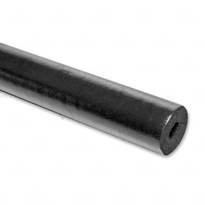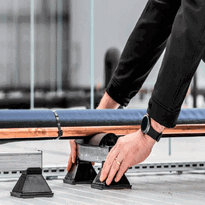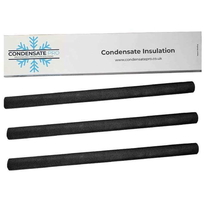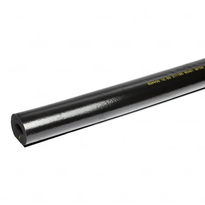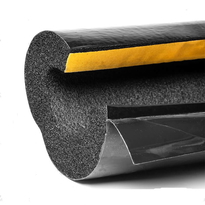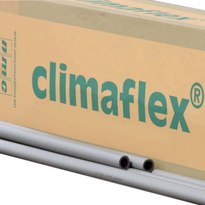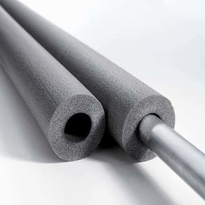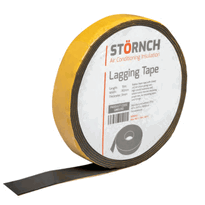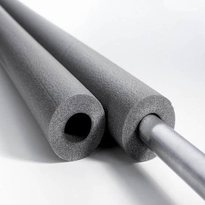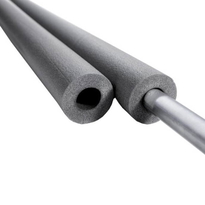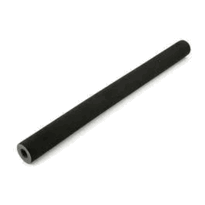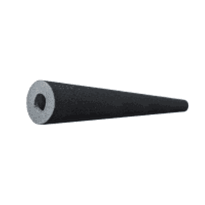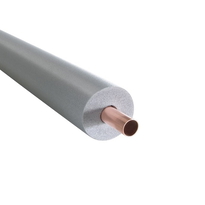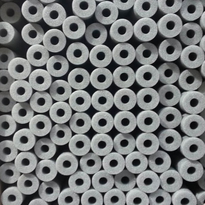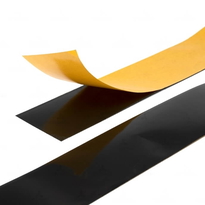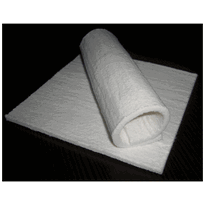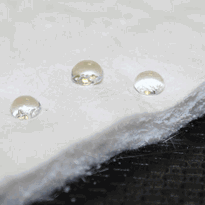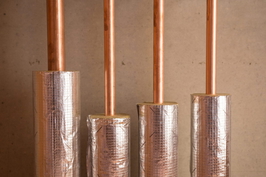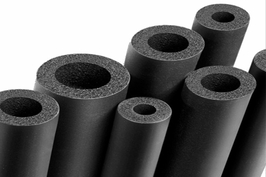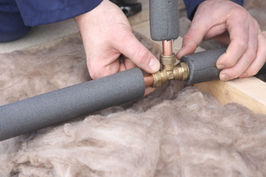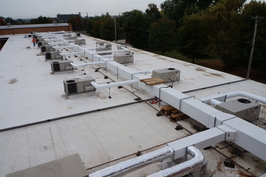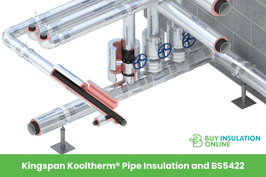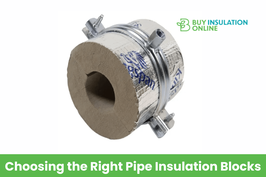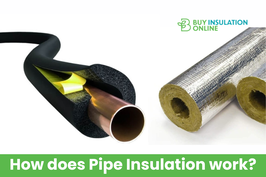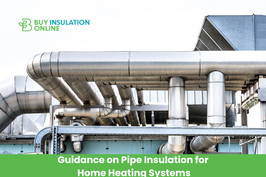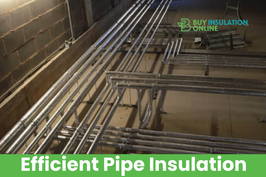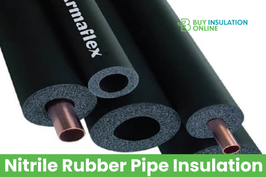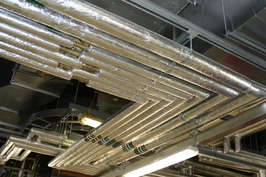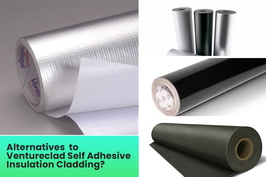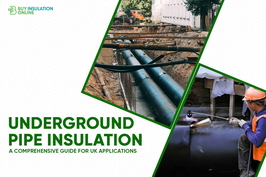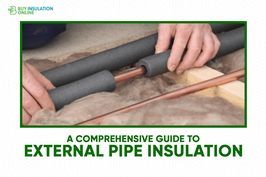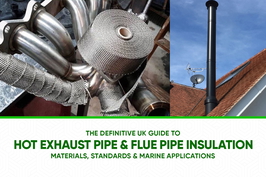Outdoor Pipe Lagging
Outdoor pipe lagging involves wrapping pipes with insulating materials such as foam, rubber, or foil-faced sheets to protect against weather and temperature fluctuations. These materials are effective in reducing heat loss, preventing freezing, and minimizing condensation on cold pipes.
Proper installation is essential and includes cleaning the pipes, measuring for the correct insulation, and sealing seams to ensure maximum efficiency. The choice of material is influenced by environmental conditions and the size of the pipes.
For more comprehensive guidance on selecting and maintaining outdoor pipe lagging, additional information is readily available.
Understanding the Different Types of Outdoor Pipe Lagging Materials
Outdoor pipe lagging is available in various materials, each tailored to meet specific requirements and environmental conditions. Polyethylene is a lightweight and flexible option that's easy to install, making it a popular choice for both residential and commercial outdoor plumbing. This material resists moisture and helps to prevent pipe corrosion caused by condensation. However, it may require additional UV protection for prolonged exposure to sunlight. Polyethylene's pipe diameter measurement and thickness influence its suitability for different applications. Polyisocyanurate, commonly known as PIR, offers high thermal efficiency and can withstand hot conditions, making it particularly suitable for industrial outdoor pipes. Typically, it comes in a rigid form with a foil facing for enhanced durability, but it does necessitate UV and abrasion protection to maintain its effectiveness. Phenolic lagging is another lightweight option that boasts fire resistance. It's often coated with foil to reflect heat and prevent moisture ingress, making it a reliable choice for various applications. Lastly, nitrile rubber is a flexible and waterproof material that also helps to reduce noise. While it performs well in outdoor environments, it's important to provide UV protection to ensure its longevity.
Key Benefits of Installing Outdoor Pipe Lagging
Installing pipe lagging provides numerous benefits that safeguard both the pipes and the surrounding environment.
Firstly, it significantly reduces heat loss from hot water pipes, which in turn lowers energy consumption and diminishes energy bills, particularly during the colder months. By helping to maintain water temperature for longer periods, pipe lagging minimises the need for reheating. Insulating pipes to reduce heat loss/gain helps keep hot water warmer for extended periods, improving overall system efficiency. Furthermore, it serves as an effective barrier against freezing temperatures, which reduces the risk of burst pipes and the associated costly repairs. Additionally, pipe lagging prevents condensation on cold pipes, offering protection to buildings from moisture damage, mold, and corrosion.
The installation also dampens noise from water flow and pipe expansion, contributing to a quieter indoor environment.
Common Applications of Outdoor Pipe Insulation
To prevent damage and enhance efficiency, outdoor pipe insulation is frequently utilized on various types of piping that are exposed to harsh weather conditions. It helps to keep pipes from freezing in cold temperatures, particularly on water supply pipes, outdoor taps, and hose bibs. Employing specialized insulation safeguards these pipes from bursting and costly water damage. Proper insulation also inhibits the growth of mold and bacteria, ensuring a safer environment. Additionally, this insulation plays a crucial role in energy savings by reducing heat loss from hot water and heating system pipes, maintaining consistent temperatures, and lowering energy consumption. Pipe lagging also prevents condensation, which can lead to rust and deterioration in metal pipes. Moreover, it shields pipes from physical damage and UV exposure, thereby extending their lifespan. This type of insulation is widely applied in outdoor irrigation, HVAC systems, industrial installations, and marine piping, ensuring durability and performance in challenging environments.
Effective Methods for Installing Pipe Lagging Outdoors
A well-planned approach to installing outdoor pipe lagging ensures that insulation remains effective and durable over time. First, accurately measuring the pipe diameter is essential for selecting the appropriate insulation size. The surface of the pipe should be thoroughly cleaned to remove any dust, dirt, and moisture, which aids in better adhesion. By measuring the length of the pipe, you can estimate the total amount of material required. Additionally, planning for fittings such as elbows and tees is crucial to ensure proper coverage. During the installation process, slip foam tubing should be placed over the pipe, and seams must be sealed with weatherproof tape to prevent moisture ingress. For bends and branches, the insulation should be cut at suitable angles, with joints secured using insulation tape. It is important to fasten everything tightly using duct tape or ties, overlapping pieces at the joints and sealing edges to protect against environmental damage. Proper insulation maintenance is also vital to ensure the longevity and effectiveness of the lagging, especially during harsh weather conditions. Regular inspections will help maintain the insulation’s performance through varying weather conditions.
Factors to Consider When Choosing and Maintaining Outdoor Pipe Insulation
When selecting and maintaining outdoor pipe insulation, several crucial factors must be considered to guarantee long-lasting performance.
Environmental and weather resistance is essential; the materials should endure rain, snow, UV rays, and fluctuations in temperature without deteriorating. Water-resistant options, such as closed-cell foam or rubber, are effective in preventing moisture absorption, while UV-resistant coatings offer protection against sun damage. Fiberglass insulation offers fire-resistant properties, which further enhances safety in outdoor environments, especially in case of accidental ignition.
Insulation must also withstand freeze-thaw cycles to avoid cracking and maintain thermal efficiency. The choice of materials should align with the pipe’s temperature requirements, with materials like fiberglass suitable for hot pipes and foam ideal for cold pipes.
Durability is paramount; therefore, insulation should be resistant to impact and mould, while protective jacketing safeguards against physical damage.
Additionally, ease of inspection and eco-friendly options contribute to a reliable and sustainable outdoor piping system.
Conclusion
Choosing the right outdoor pipe lagging is essential for protecting pipes against extreme weather conditions and preventing freezing. By employing proper installation techniques and conducting regular maintenance, you can maximise the effectiveness of the insulation, thereby prolonging the lifespan of your plumbing and minimizing repair costs.
Understanding the various materials available and their respective benefits allows property owners to make informed decisions regarding the most suitable insulation for their specific requirements. High-quality pipe lagging is a worthwhile investment, providing essential protection for plumbing systems against the elements encountered outdoors.
In summary, ensuring that your outdoor pipes are adequately insulated not only safeguards your property but also promotes a more efficient plumbing system.
